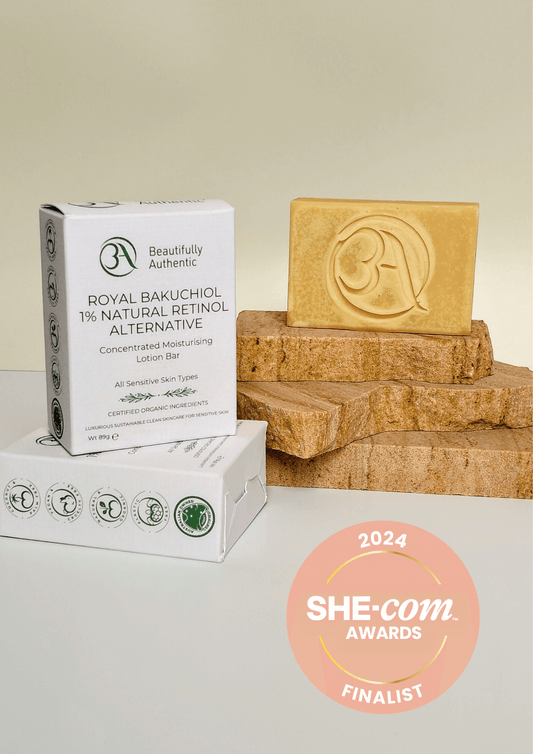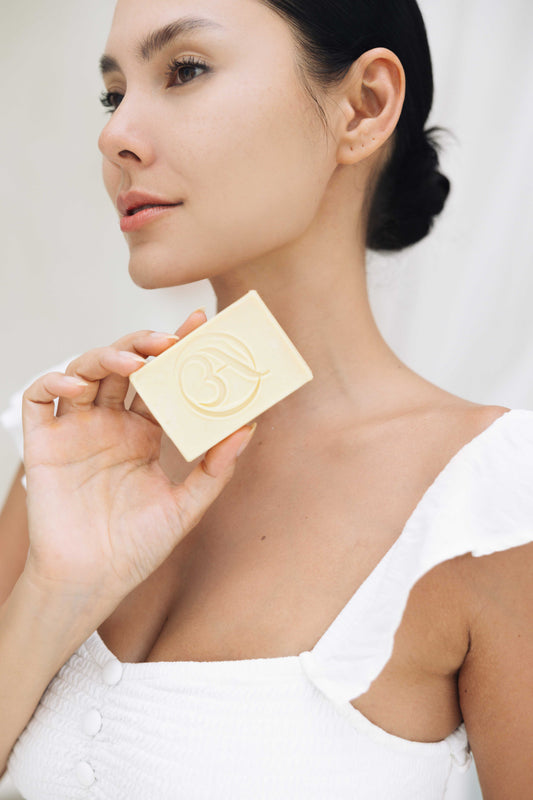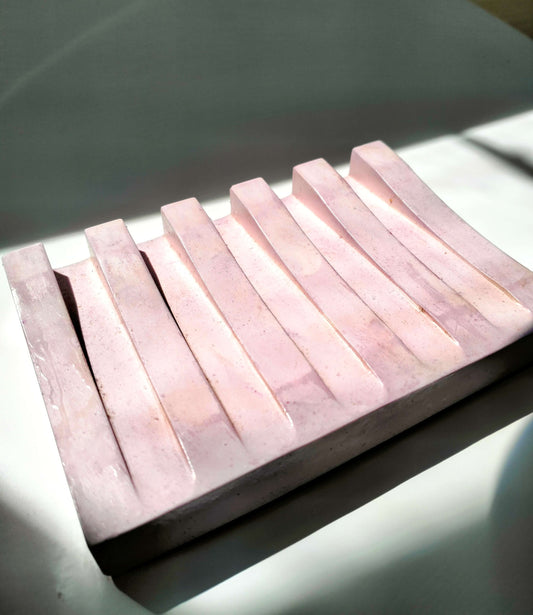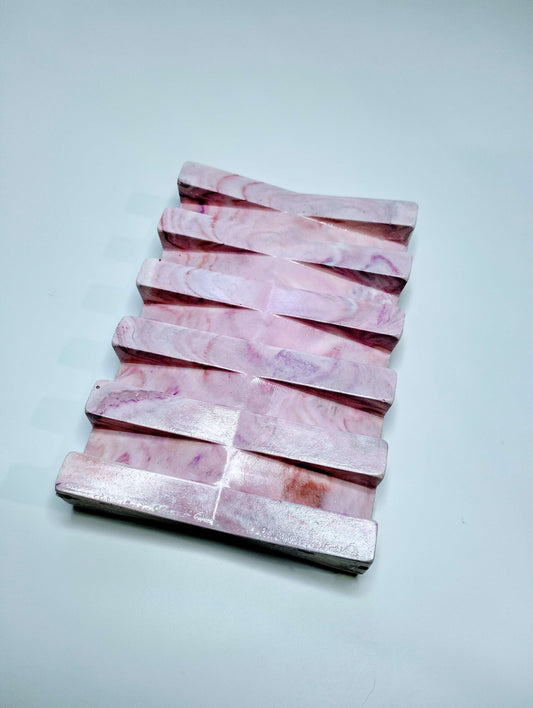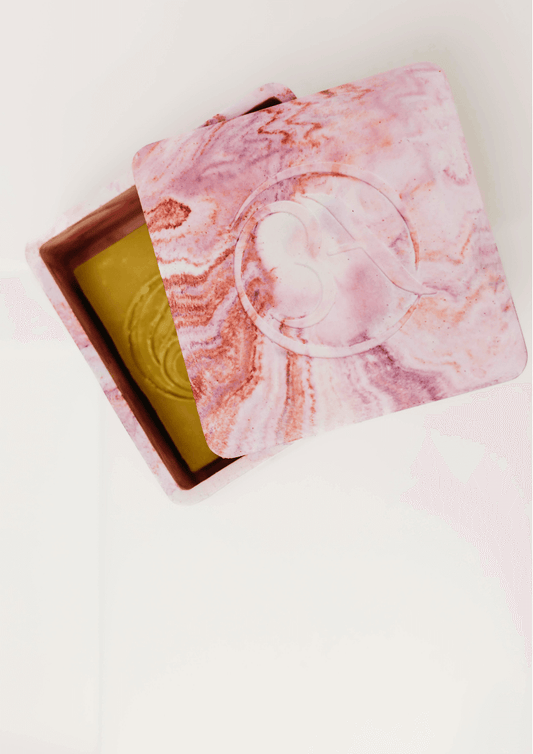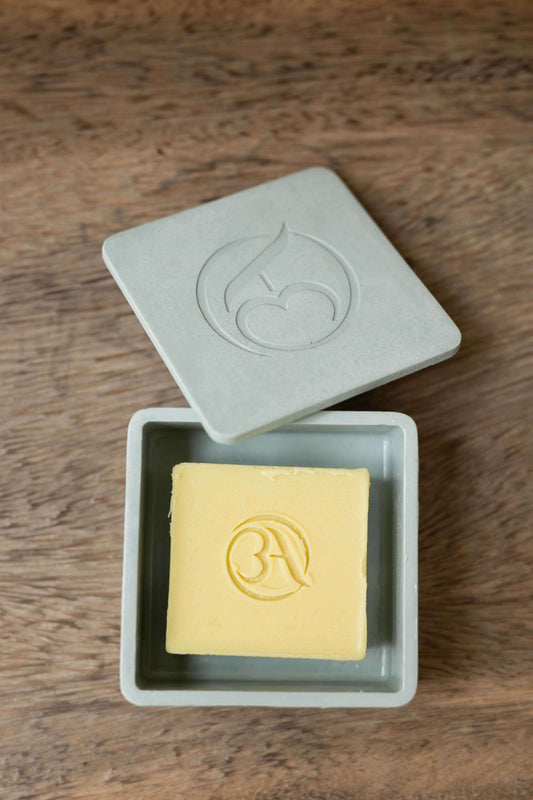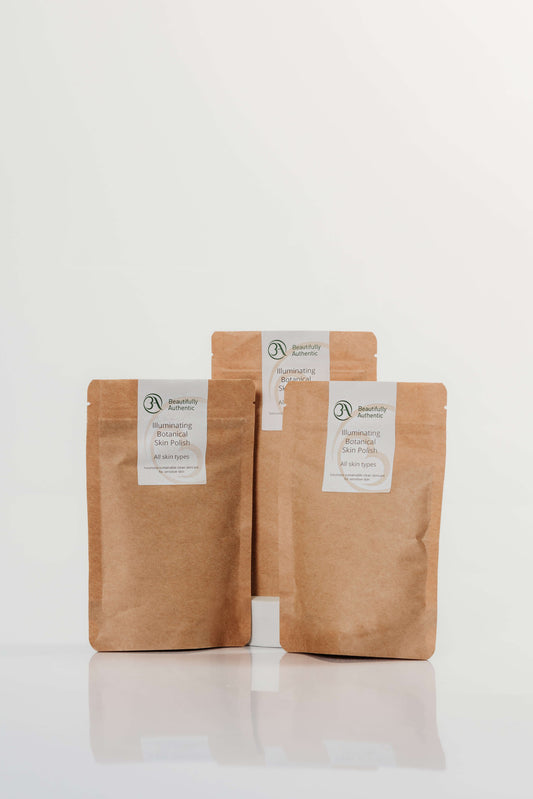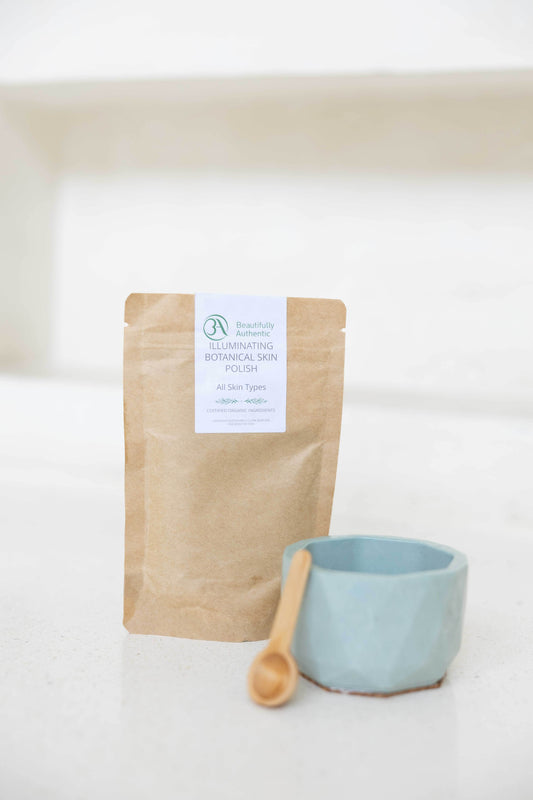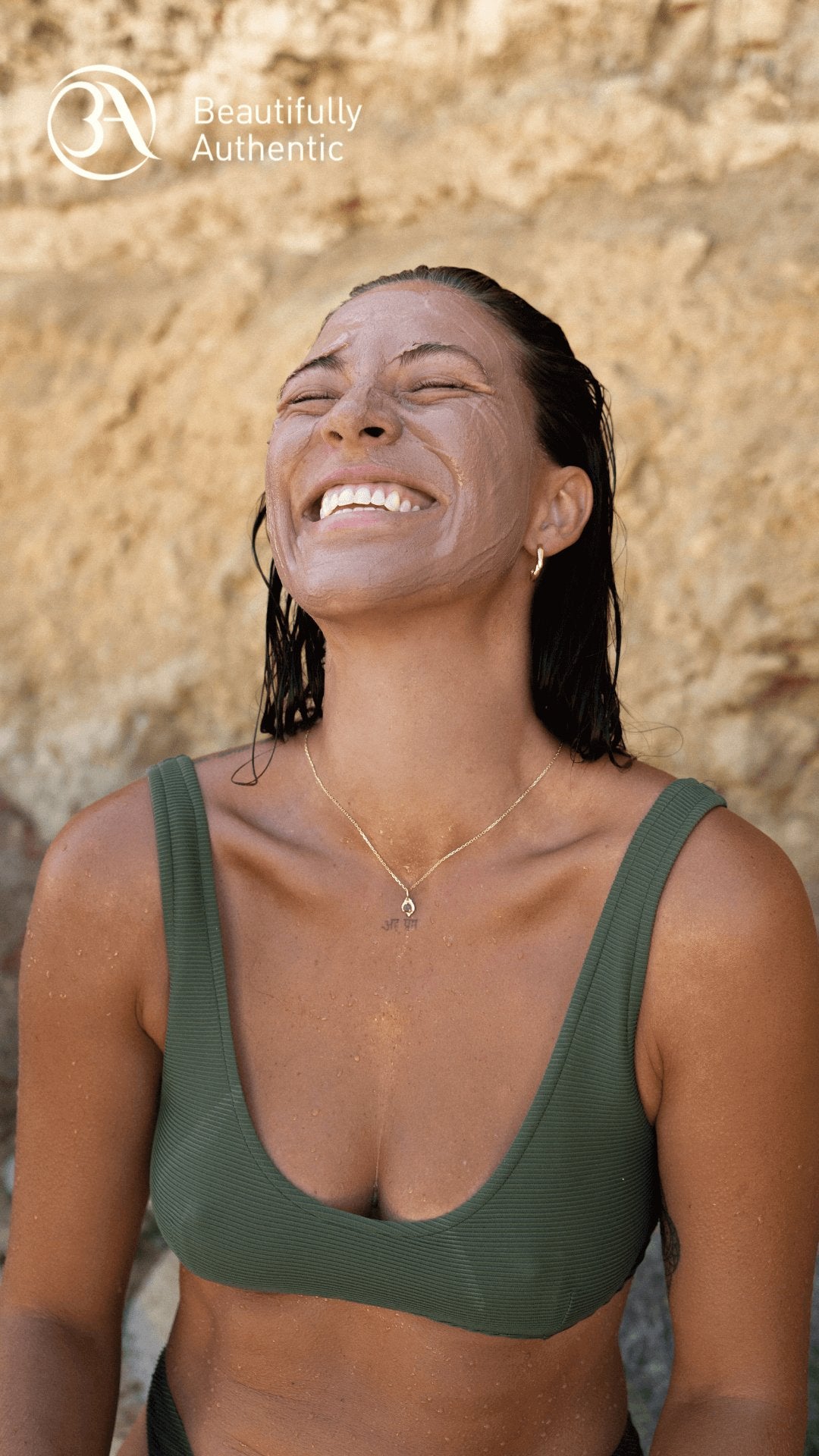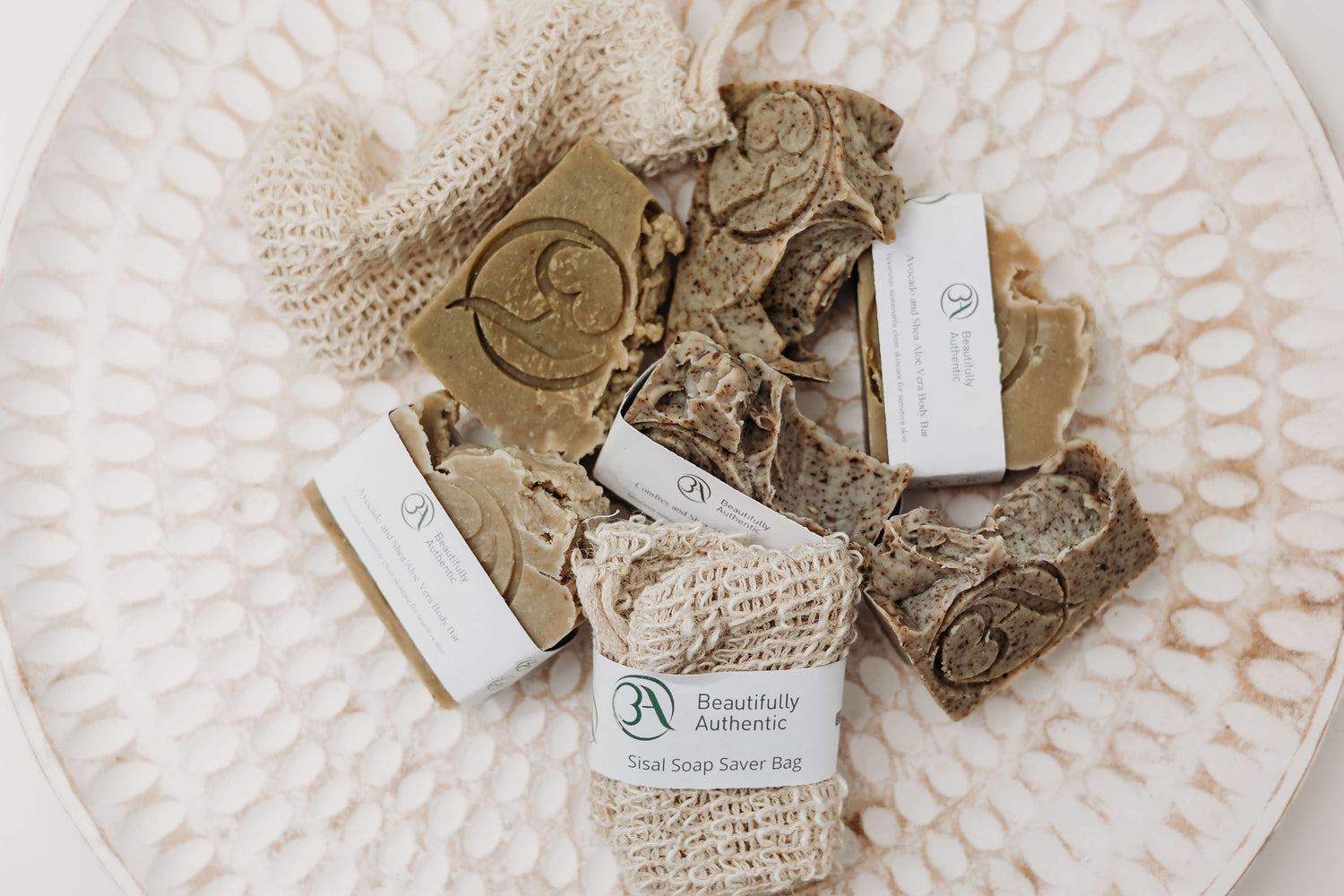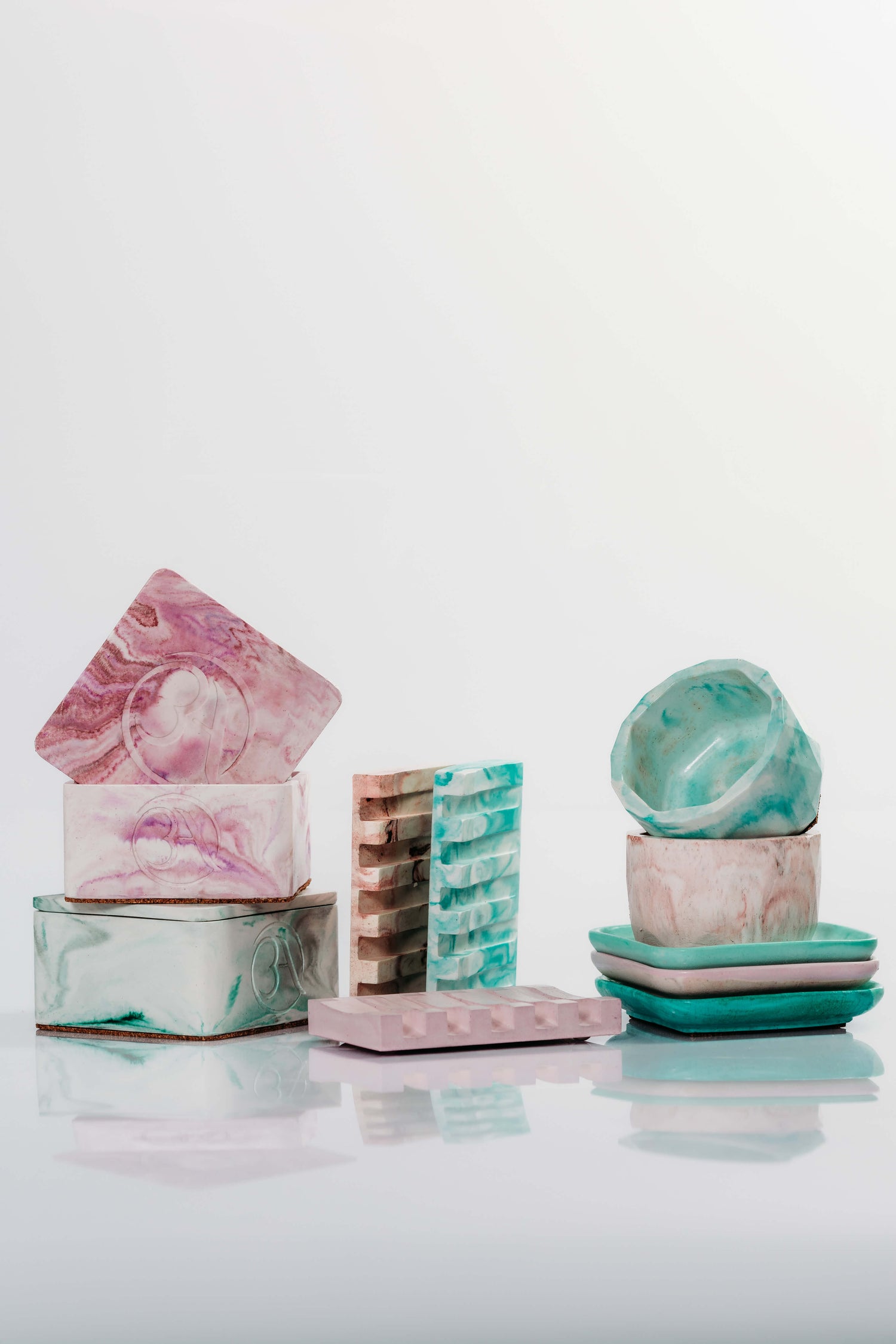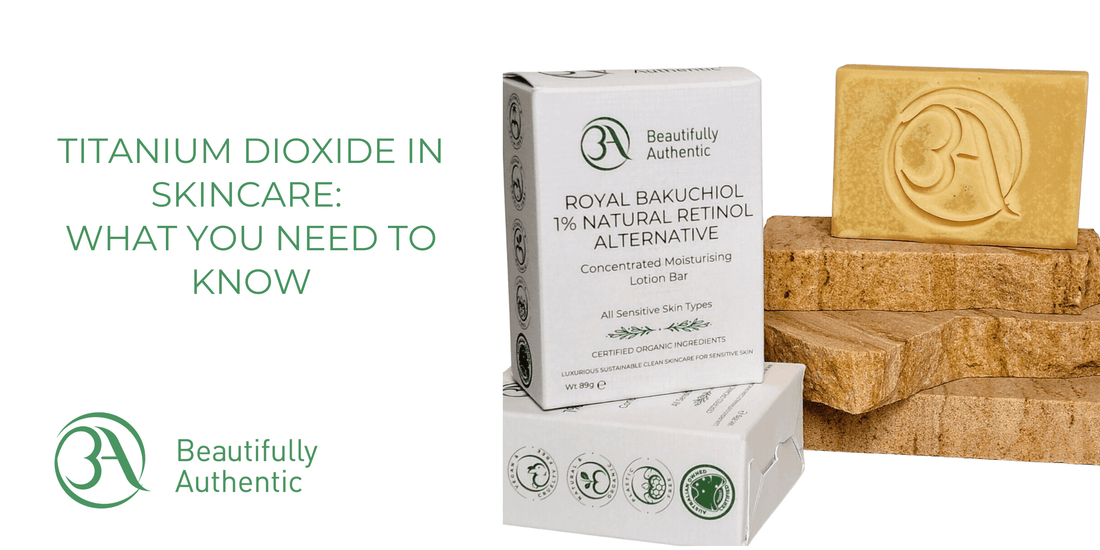
Titanium Dioxide in Skincare: What You Need to Know
Ever wondered what titanium dioxide was in your makeup? Is it good or bad for our skin? What does the science actually say? Well, I did the looking up for you — so you can be fully informed. This is a non-biased deep dive into titanium dioxide — and at the end, I’ll explain why I choose not to use it in Beautifully Authentic skincare products.
What Is Titanium Dioxide?
Titanium dioxide (TiO₂) is a naturally occurring mineral used in everything from paint to toothpaste — and yes, your foundation, sunscreen, and powder. In the beauty world, it’s prized as a white pigment and physical UV filter, helping to create opacity, coverage, and sun protection.
There are two main types used in cosmetics:
- Micronised (non-nano) titanium dioxide — larger particles that reflect light, often leaving that tell-tale white cast.
- Nano titanium dioxide — tiny, transparent particles used to create lighter, more blendable sunscreens and makeup.
Both forms are approved for cosmetic use around the world, but their safety profiles differ — especially when it comes to how they interact with light, skin, and the body.
Why It’s Used in Beauty Products
Titanium dioxide is one of the most common ingredients in sunscreens because it’s a mineral UV filter. Instead of being absorbed into the skin like chemical filters, it sits on top and scatters or reflects UV rays. This is often why it’s marketed as a gentler, more “natural” alternative to chemical sunscreens.
It’s also found in makeup — foundations, BB creams, powders, concealers, and tinted moisturisers — to give that smooth, even-toned finish. The ingredient helps with coverage and brightness, creating that “porcelain” look many cosmetic brands aim for.
At first glance, it sounds harmless enough. But when you dig into the research, things get more complicated.
The Science: What Research Says About Titanium Dioxide
1. How It Interacts with Skin
Multiple studies and regulatory reviews (including the EU’s Scientific Committee on Consumer Safety) have found that titanium dioxide doesn’t significantly penetrate the skin’s surface when used in creams or lotions. It mostly stays in the outermost layer — the stratum corneum — and doesn’t reach deeper, living layers of the skin.
That’s good news for most people. It means that under normal use, titanium dioxide isn’t likely to enter the bloodstream or build up inside the body through the skin. However, this assumption is based on intact, healthy skin. When the skin barrier is compromised — through eczema, rosacea, sunburn, or inflammation — absorption could increase slightly, though still within low ranges.
2. Photocatalytic Activity (and Why It Matters)
Titanium dioxide is what’s known as a photocatalyst — meaning when it’s hit by UV light, it can produce reactive oxygen species (ROS), or free radicals. These are unstable molecules that can damage cells, DNA, and collagen — the same type of oxidative stress that contributes to premature skin aging.
Most cosmetic-grade titanium dioxide is coated (with silica, alumina, or other minerals) to prevent this reaction, making it safer and less reactive. But if the coating is incomplete or the formulation unstable, this oxidative potential can still occur — especially with nano-sized particles.
Some animal and cell studies have shown that uncoated nano titanium dioxide can trigger oxidative stress and reduce collagen levels — processes linked with photoaging. However, these studies often use unrealistically high doses, not reflective of typical human use.
So the concern isn’t that titanium dioxide is inherently toxic to the skin — it’s that under certain conditions (improper coatings, damaged skin, or excessive exposure), it may contribute to oxidative damage rather than prevent it.
3. Internal & Inhalation Concerns
Where titanium dioxide raises bigger red flags is not through the skin — but through inhalation and ingestion.
In 2022, the European Food Safety Authority banned titanium dioxide (known as additive E171) in food due to genotoxicity concerns — meaning there’s evidence it may damage DNA when ingested in large quantities or over long periods. Studies also suggest that inhaled titanium dioxide particles (for instance, in loose powders or sprays) can cause lung inflammation and, in industrial settings, may be linked to cancer risk.
That’s why the EU now prohibits nano titanium dioxide in spray or aerosol cosmetics — to prevent people from breathing it in.
Even though this isn’t how most people use skincare, the evidence is enough to raise caution — particularly for those exposed daily through multiple products.
4. Sensitive Skin & Allergic Potential
Titanium dioxide is generally considered low-irritant, and is often recommended for sensitive or acne-prone skin because it doesn’t absorb like chemical filters. However, rare cases of contact sensitivity have been documented, and some users experience mild irritation when formulations are poorly stabilised or when nano-particles interact with other actives.
For sensitive or reactive skin types, the risk isn’t zero, especially when barrier function is already compromised.
The Pros and Cons, at a Glance
| Pros | Cons |
|---|---|
| Broad UV protection (especially UVB) | Potential to generate free radicals if uncoated |
| Gentle on most skin types | Concerns over nano-particle safety |
| Photostable and non-allergenic in most formulations | Possible oxidative stress under UV exposure |
| Non-comedogenic (won’t clog pores) | May leave a white cast or dry finish |
| Often marketed as “natural” | Inhalation or ingestion risks in powder/spray forms |
So… Can Titanium Dioxide Cause Premature Aging?
There’s some scientific basis for the idea that titanium dioxide — particularly nano forms — could contribute to oxidative stress in skin cells, which is one of the drivers of premature aging. A few studies have shown that when titanium dioxide is uncoated and exposed to UV, it can generate free radicals that damage lipids, proteins, and DNA.
But — and this is important — these effects are largely prevented in modern formulations that use coated or encapsulated titanium dioxide. In other words, it depends on the quality and safety of the formulation, not just the ingredient itself.
Still, as a formulator and someone deeply invested in skin health, that “maybe” is enough for me to pause.
My Honest Take as a Formulator
Titanium dioxide is a fascinating ingredient. It has its place in sun protection and cosmetics — and many high-quality, safe products use it responsibly. For people who tolerate it well, it can be a good option for daily UV defense, especially compared to some chemical filters that are far more irritating or environmentally harmful.
But here’s why I choose not to use it in Beautifully Authentic skincare:
Even though most evidence suggests it’s safe under certain conditions, those conditions have a lot of ifs attached. If it’s coated properly. If the formulation is stable. If it’s not nano-sized. If the skin barrier is intact. If it’s not inhaled.
That’s too many variables for an ingredient that’s meant to protect, not risk. In my view, it’s not 100% safe — and if something isn’t unequivocally safe for sensitive, inflamed, or barrier-compromised skin, it doesn’t belong in our formulations.
Our philosophy at Beautifully Authentic is simple: if there’s doubt, we leave it out.
Instead, we rely on gentle, nutrient-dense botanicals, natural minerals, and plant-based antioxidants that work in harmony with the skin’s natural processes — no harsh synthetics, no unnecessary fillers, and no questionable particles.
The Bottom Line
Titanium dioxide isn’t the villain of the skincare world — but it isn’t the saint it’s often made out to be either. It’s a powerful mineral that can protect or harm depending on how it’s handled. While research continues to evolve, the uncertainty surrounding its long-term effects, especially in nanoparticle form, is enough reason for Beautifully Authentic to steer clear.
Because your skin — especially if it’s sensitive — deserves ingredients that nourish, repair, and protect without question.
At Beautifully Authentic, we believe knowledge empowers better choices. Every ingredient has a story — and we’re here to tell it, honestly.

